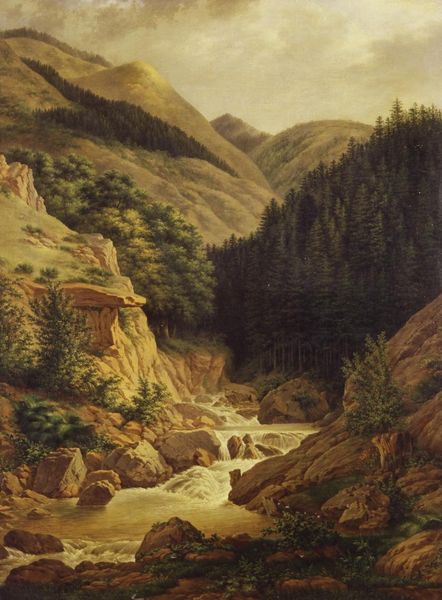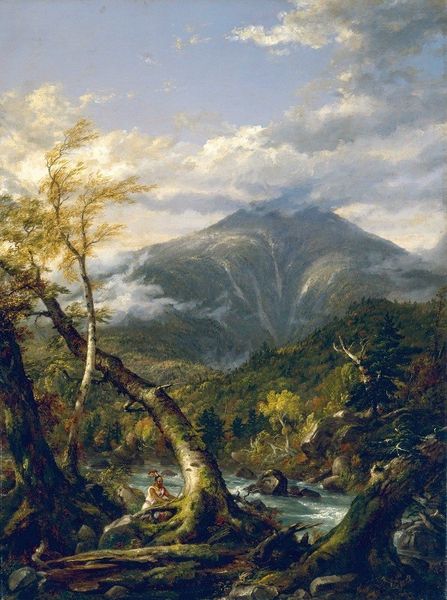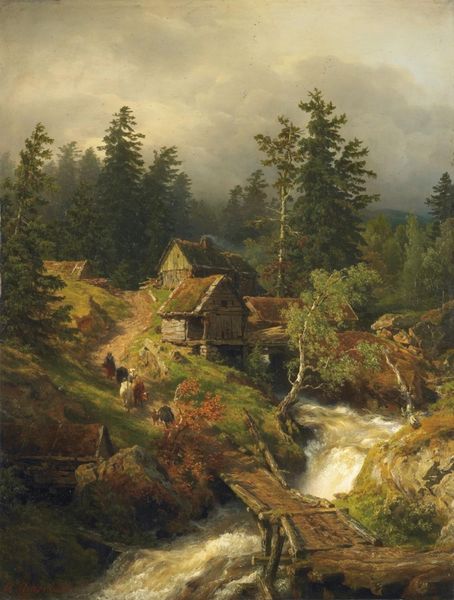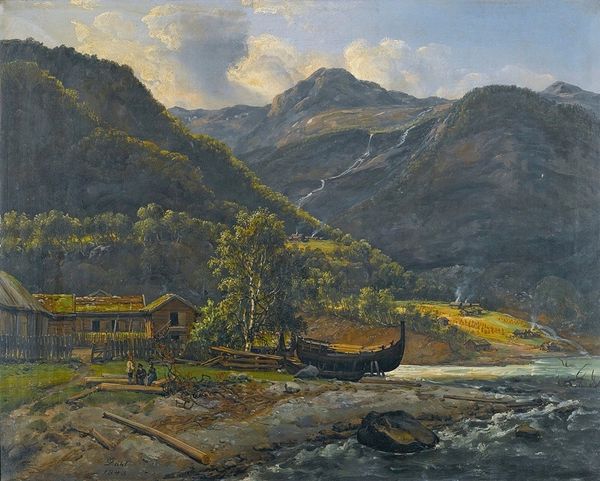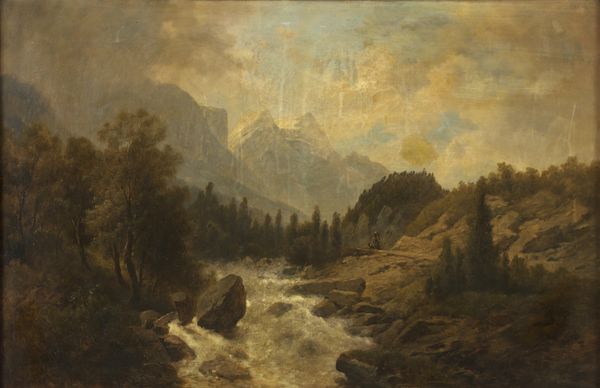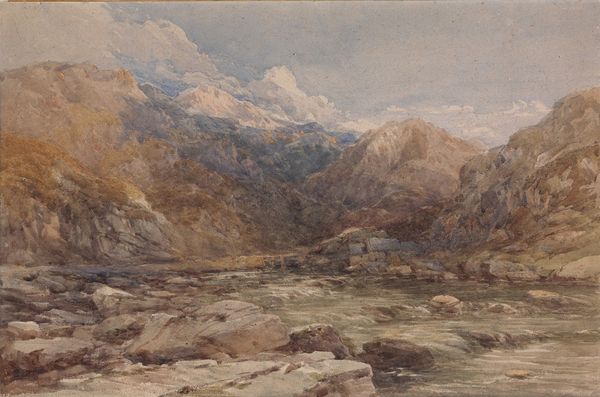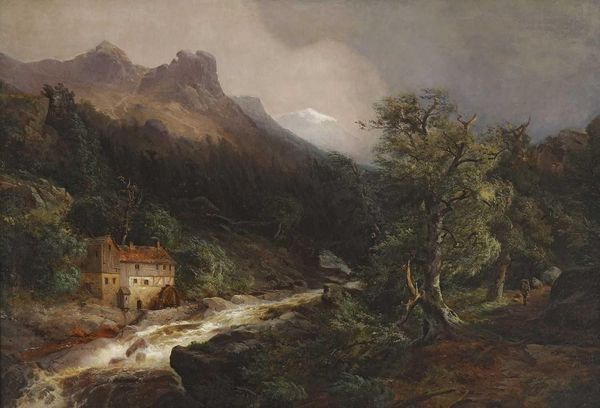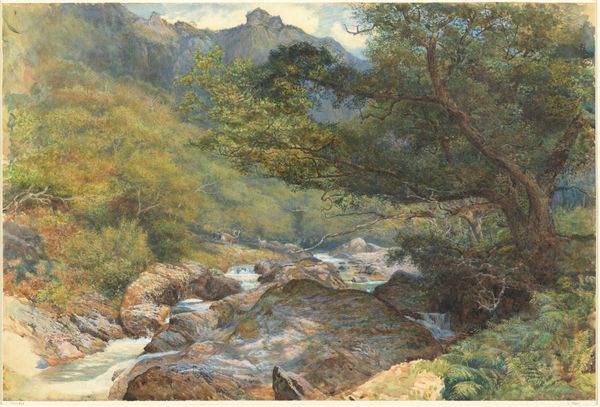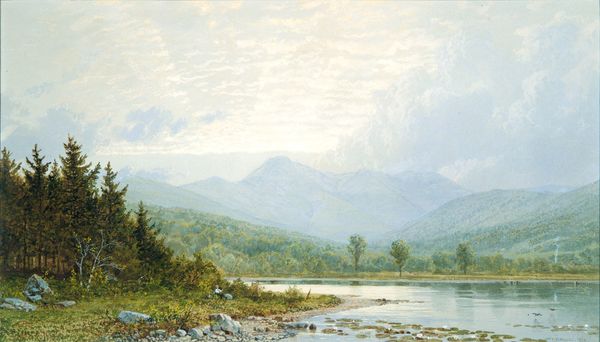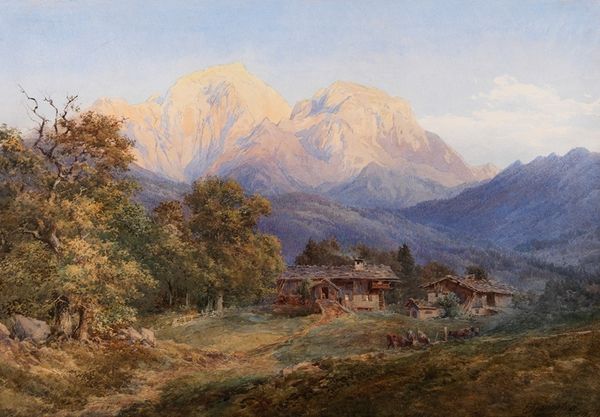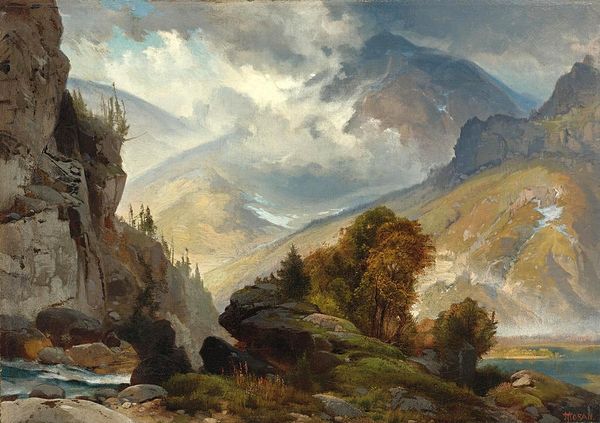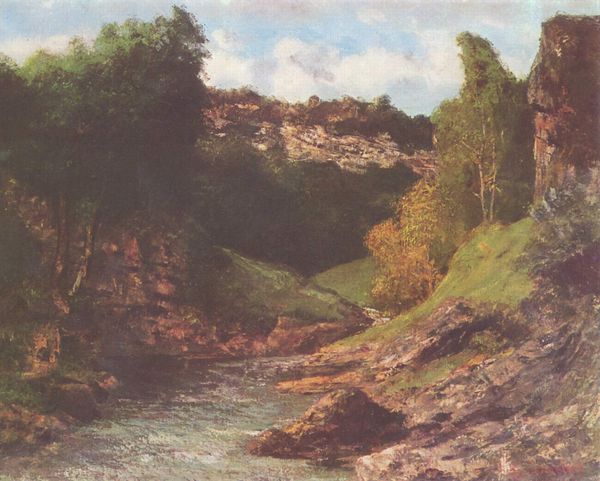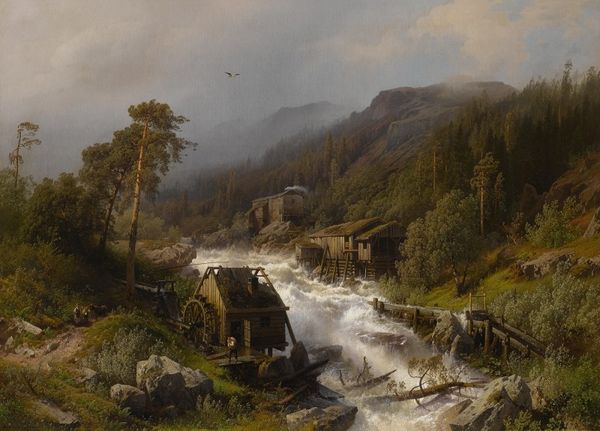
painting, oil-paint
#
tree
#
rough brush stroke
#
painting
#
oil-paint
#
landscape
#
river
#
impressionist landscape
#
nature
#
oil painting
#
romanticism
#
mountain
#
natural-landscape
#
men
#
cityscape
#
nature
#
watercolor
#
realism
Copyright: Public domain
Curator: Ferdinand Georg Waldmüller's "Mill at the outlet of the Königssee," painted around 1840, captures a quaint mill nestled beside a rushing stream. Painted in oil, the work presents a Romantic view of nature coexisting with human industry. Editor: The overwhelming feeling is one of dynamic tension, actually. You've got the solid, almost stolid structure of the mill set against the untamed, rushing water. It feels like humanity attempting to find its place within—maybe even dominate—the raw power of the natural world. Curator: Precisely, that dynamic is so characteristic of Romanticism. Think of the mill not just as a building but as a symbol of human ingenuity, adapting and harnessing the power of the natural elements. Notice how Waldmüller balances it with the grandeur of the surrounding mountains, a kind of picturesque, spiritualized landscape that reflects humanity’s attempt to live in harmony with its surrounding environment. Editor: It's also crucial to note the context of this image within a burgeoning industrial revolution. Rural spaces and labor were beginning to be significantly affected. Do the figures around the mill partake in some pastoral idealization, obscuring how water-powered industry extracted from both human labor and nature? Curator: That's a fair challenge. One way of viewing it involves investigating the colors: earth tones, with the browns and greens symbolizing an unbroken link to history and the landscape, thus indicating more complex connotations related to sustainability. It’s like the landscape offers its bounty with reciprocity. Editor: Maybe, but I remain skeptical. This imagery presents the Königssee in a selective way that glosses over other impacts industrial processes could carry—a commentary the piece sidesteps. Whose lives are being centered within these naturalized landscapes? Whose realities get concealed by these portrayals of harmony? Curator: Those are critical points for us to keep asking. Perhaps the appeal isn’t that such balance exists, but that the visual presentation invites viewers to aspire toward it. We observe continuity between the historical and current relationship we establish with ecological resources, through constructed artistic visions that continue to shape us. Editor: I agree. We, as present day activists, can extract from historical Romantic images inspiration while being self-aware and critical about both who they center and how historical lenses create, rather than simply reflect, meaning.
Comments
No comments
Be the first to comment and join the conversation on the ultimate creative platform.
